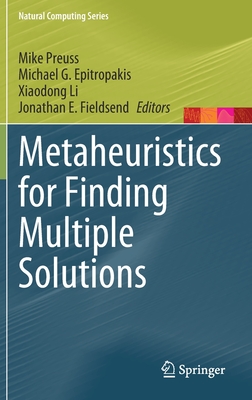Numerical Methods for Seakeeping Problems
El Moctar, Bettar Ould, Schellin, Thomas E., Söding, Heinrich
- 出版商: Springer
- 出版日期: 2021-01-20
- 售價: $7,310
- 貴賓價: 9.5 折 $6,945
- 語言: 英文
- 頁數: 290
- 裝訂: Hardcover - also called cloth, retail trade, or trade
- ISBN: 3030625605
- ISBN-13: 9783030625603
-
相關分類:
數值分析 Numerical-analysis、流體力學 Fluid-mechanics、Algorithms-data-structures
海外代購書籍(需單獨結帳)
相關主題
商品描述
作者簡介
Bettar Ould el Moctar studied Naval Architecture and Ocean Engineering at the University of Hamburg/Germany. He graduated in 1997 and has since then worked as a research assistant in different departments of the University of Technology Hamburg, where he has specialized in computational fluid dynamics. He completed his doctorate at the University of Technology Hamburg with a dissertation entitled "Numerical Computation of Forces Acting on Maneuvering Ships." In 2000 he joined the Hamburg Ship Model Basin (HSVA) and worked as a research engineer. He was head of department of fluid dynamics at Germanischer Lloyd/Germany from 2002 to 2008 and global head of research at DNV GL advisory services/Germany/Norway from 2013 to 2016. Since 2008 he has been working at the University Duisburg-Essen as a full professor for ship technology and Ocean Engineering and member of the Board of Directors of the shallow water model basin DST/Germany. He is editor and co-editor for several international journals and has been member of different international committees. His publications cover various aspects of hydrodynamics and Fluid-Structure-Interaction. The focus of his research is the development of numerical and experimental methods for seakeeping, hydroelasticity, cavitation, slamming and sloshing, maneuvering and propulsion in waves.
Thomas E. Schellin has been lecturing at the Institute of Ship Technology, Ocean Engineering and Transport Systems (ISMT) of the University of Duisburg-Essen since the beginning of 2016. Currently, he also works on a freelance relationship for DNV GL, acting as a Marine Warranty Surveyor. In 2004, after his formal retirement from Germanischer Lloyd (now DNV GL), he spent a semester teaching Ship Dynamics at Virginia Tech University and, from 2007 to 2014, he taught also at the Technical University of Berlin. His work at Germanischer Lloyd (GL) comprised the development of hydrodynamic analysis methods for ships and offshore structures, coordination of nationally and internationally sponsored research projects, and formulation of class rules for fast ships, offshore structures, and offshore service vessels. He was GL's representative in the IACS AHG on Mooring and Anchoring, served on the 2001 and 2003 ISSC Committee I.2 Loads, and was the official discusser of the 2009 ISSC I.2 Loads Committee Report. He has published widely and is a Life Fellow of ASME and SNAME. Born in Germany, in 1964 he obtained his M.S. in Naval Architecture from the Massachusetts Institute of Technology and, in 1971, his Ph.D. in Mechanical Engineering from Rice University, Houston, Texas.
Heinrich Söding was born in Dresden (Germany) in 1936. Grown up in Münster and Hamburg, he began studying Physics in Hamburg, then Naval Architecture in Hannover and Hamburg, receiving a Ph.D. in 1967 from the Hamburg University. He then joined Germanischer Lloyd from 1967 to 1970, mainly developing and applying load predictions of large containerships. From 1970 to 1979 he was Professor for computer-aided ship design at the Technical University Hannover, and from 1980 Professor for ship theory at the Hamburg University until his retirement in 2001. He lead about 50 scholars to their Ph.D. degree in the fields of ship design, seakeeping and maneuvering. Besides his university obligations, he performed numerous investigations for industry and courts of justice on the fields of lines fairing, hydrostatics, damage stability, resistance, seakeeping and maneuvering of ships and airplane ditching. His computer programs for these topics are used widely. He published about 90 papers in English and numerous others in German language. For nearly two decades he was (first) editor and (later) publisher of the journal Ship Technology Research.


















